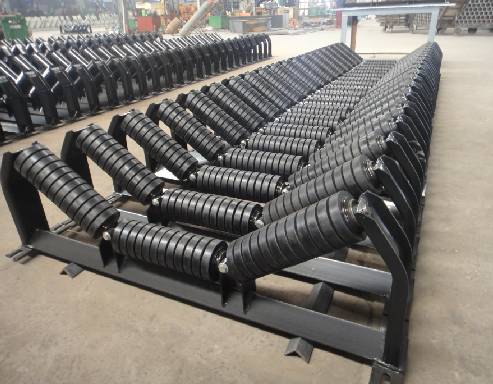 Afrikaans
Afrikaans  Albanian
Albanian  Amharic
Amharic  Arabic
Arabic  Armenian
Armenian  Azerbaijani
Azerbaijani  Basque
Basque  Belarusian
Belarusian  Bengali
Bengali  Bosnian
Bosnian  Bulgarian
Bulgarian  Catalan
Catalan  Cebuano
Cebuano  Corsican
Corsican  Croatian
Croatian  Czech
Czech  Danish
Danish  Dutch
Dutch  English
English  Esperanto
Esperanto  Estonian
Estonian  Finnish
Finnish  French
French  Frisian
Frisian  Galician
Galician  Georgian
Georgian  German
German  Greek
Greek  Gujarati
Gujarati  Haitian Creole
Haitian Creole  hausa
hausa  hawaiian
hawaiian  Hebrew
Hebrew  Hindi
Hindi  Miao
Miao  Hungarian
Hungarian  Icelandic
Icelandic  igbo
igbo  Indonesian
Indonesian  irish
irish  Italian
Italian  Japanese
Japanese  Javanese
Javanese  Kannada
Kannada  kazakh
kazakh  Khmer
Khmer  Rwandese
Rwandese  Korean
Korean  Kurdish
Kurdish  Kyrgyz
Kyrgyz  Lao
Lao  Latin
Latin  Latvian
Latvian  Lithuanian
Lithuanian  Luxembourgish
Luxembourgish  Macedonian
Macedonian  Malgashi
Malgashi  Malay
Malay  Malayalam
Malayalam  Maltese
Maltese  Maori
Maori  Marathi
Marathi  Mongolian
Mongolian  Myanmar
Myanmar  Nepali
Nepali  Norwegian
Norwegian  Norwegian
Norwegian  Occitan
Occitan  Pashto
Pashto  Persian
Persian  Polish
Polish  Portuguese
Portuguese  Punjabi
Punjabi  Romanian
Romanian  Russian
Russian  Samoan
Samoan  Scottish Gaelic
Scottish Gaelic  Serbian
Serbian  Sesotho
Sesotho  Shona
Shona  Sindhi
Sindhi  Sinhala
Sinhala  Slovak
Slovak  Slovenian
Slovenian  Somali
Somali  Spanish
Spanish  Sundanese
Sundanese  Swahili
Swahili  Swedish
Swedish  Tagalog
Tagalog  Tajik
Tajik  Tamil
Tamil  Tatar
Tatar  Telugu
Telugu  Thai
Thai  Turkish
Turkish  Turkmen
Turkmen  Ukrainian
Ukrainian  Urdu
Urdu  Uighur
Uighur  Uzbek
Uzbek  Vietnamese
Vietnamese  Welsh
Welsh  Bantu
Bantu  Yiddish
Yiddish  Yoruba
Yoruba  Zulu
Zulu Design Considerations for Head and Tail Pulleys in Belt Conveyor Systems for Optimal Performance
Understanding Head and Tail Pulleys in Belt Conveyors
Belt conveyors are integral components in material handling systems across various industries. One of the key elements that facilitate the operation of these conveyors is the system of pulleys, which includes the head pulley and the tail pulley. Understanding the functionalities and significance of these pulleys is crucial for optimizing conveyor performance and ensuring long equipment life.
What Are Head and Tail Pulleys?
In a belt conveyor system, the head pulley is located at the discharge end of the conveyor. It is typically positioned at the top of an incline, where the material is unloaded from the belt. The head pulley serves multiple purposes, including providing tension to the belt, serving as the driving mechanism for the entire conveyor system, and guiding the belt's direction.
On the other hand, the tail pulley is situated at the loading end of the conveyor, where the material is fed onto the belt. The primary function of the tail pulley is to provide support for the belt as it returns to the head pulley for the next cycle. While it does not drive the conveyor like the head pulley, it plays a vital role in maintaining the belt’s alignment and tension, which is crucial for operational efficiency.
Role of Pulleys in Conveyor Performance
Both head and tail pulleys are critical in maintaining the overall performance of a belt conveyor system. The head pulley, being the driving force, is usually equipped with a motor that rotates it, propelling the belt forward. This rotation is essential for the continuous movement of materials from one point to another. The design of the head pulley typically includes features that enhance traction and grip on the belt, ensuring that heavy loads can be moved efficiently without slippage.
head pulley tail pulley for belt conveyor

The tail pulley, however, is equally important in preventing the belt from sagging or misaligning. A properly aligned belt reduces wear and tear on the equipment, extends the life of the conveyor system, and minimizes the risk of accidents. Additionally, the tail pulley can sometimes feature a self-cleaning mechanism to remove material that might build up, further enhancing belt performance.
Maintenance and Importance of Proper Alignment
Regular maintenance of both the head and tail pulleys is crucial. Operators should frequently check for wear and tear, ensuring that bearings are lubricated and that there is no debris obstructing the pulleys. Misalignment of either pulley can lead to belt slippage, increased wear rates, and potential system failures.
Moreover, proper adjustment of belt tension is necessary for balancing the load across the conveyor. While the head pulley typically manages the tension, the tail pulley must also contribute by allowing for slight variations in belt length, accommodating thermal expansion and contraction.
Conclusion
In summary, head and tail pulleys are fundamental components of belt conveyor systems. The head pulley drives the conveyor and manages belt tension, while the tail pulley provides support and ensures alignment. Understanding the roles and maintenance needs of these pulleys can significantly impact the efficiency and longevity of conveyor operations. By ensuring that both pulleys are well-maintained and properly aligned, industries can enhance their productivity, reduce operational costs, and prolong the life of the conveyor system.
-
Revolutionizing Conveyor Reliability with Advanced Rubber Lagging PulleysNewsJul.22,2025
-
Powering Precision and Durability with Expert Manufacturers of Conveyor ComponentsNewsJul.22,2025
-
Optimizing Conveyor Systems with Advanced Conveyor AccessoriesNewsJul.22,2025
-
Maximize Conveyor Efficiency with Quality Conveyor Idler PulleysNewsJul.22,2025
-
Future-Proof Your Conveyor System with High-Performance Polyurethane RollerNewsJul.22,2025
-
Driving Efficiency Forward with Quality Idlers and RollersNewsJul.22,2025





























